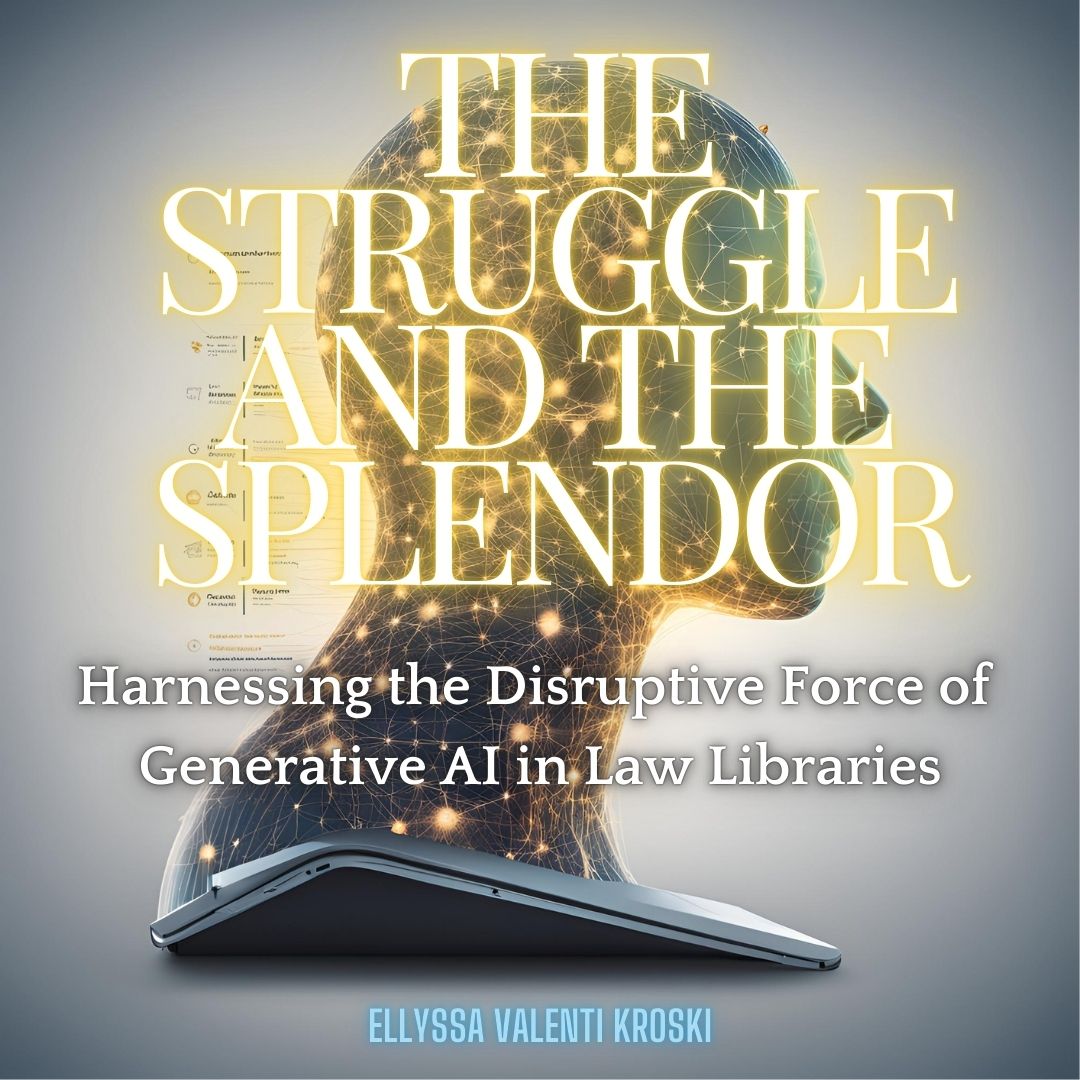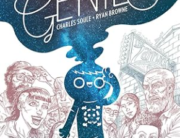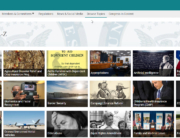AI is not going to replace you. You’re going to be replaced by someone who uses AI to outperform you.
– Laurence Liew, director for AI Innovation at AI Singapore
There’s no doubt about it; today’s Generative AI (GAI) tools, such as ChatGPT, Google Gemini, Microsoft Copilot, and Claude, are disruptive technologies. Boasting the ability to turn mere thoughts and cobbled-together ideas into brilliant essays, blog posts, articles, song lyrics, and more, GAI applications are saving content producers vast amounts of time by becoming virtual collaborators in the creative process. And they are poised to replace all manner of tasks and functions in businesses and organizations which is the epitome of what a disruptive technology is all about.
With every new wave of technological advancement, we have seen disruptors change the nature of how and what we define as creation and the work product. When blogs democratized the journalistic realm through the advent of Web 2.0 and user-based tagging put cataloging and classification into the hands of the Everyman, we fretted over the disruption. But if there was one thing we learned, it was that technological change and evolution cannot be hindered and, therefore, needs to be understood and embraced. It’s second nature nowadays to navigate Web-based content via tags and to read authoritative news, research, and insight on a blog. And so GAI will and already is interweaving with the new and the now.
Becoming the Disruptor
Instead of getting disrupted, here are fifteen ways that law librarians can harness the power of Generative AI and become the disruptor.
1) Research
Both free and fee-based GAI tools such as ChatGPT, Google Gemini, Microsoft Copilot, and Claude can all assist with research by offering assistance with:
- Conducting research and providing citations
- Finding research with editorial enhancements
- Broadening or narrowing research ideas
- Identifying relevant research keywords
Suggested prompt for ChatGPT: Can you analyze the key arguments and legal precedents in the case of Roper v. Simmons (2005) and how they might apply to a current complex litigation scenario?
Suggested prompt for Microsoft Copilot: According to the Code of Federal Regulations, what is the federally regulated maximum distance that ketchup may flow within 30 seconds at 20 degrees Celsius to meet quality standards in the US?
Legal Research GAI
- Thomson Reuters has integrated Generative AI features across many of its legal research databases, such as Westlaw Precision with AI and Ask Practical Law AI, which will each assist with AI-assisted research and offer editorial enhancements. The legal research giant has partnered with Microsoft Copilot to integrate CoCounsel into Microsoft properties, including MS Word, Outlook, SharePoint, and Teams. And they look forward to expanding this offering to include drafting within 2024. There has also been discussion about integrating other databases, allowing users to draft contracts with Practical Law and ask Westlaw Precision questions from within Microsoft Word.
- LexisNexis has also integrated GAI into its platform via Lexis+AI, which features the ability to draft documents with the help of AI, conduct document reviews, summarize documents, conduct document analysis, and conduct AI-assisted research.
- Wolters Kluwer is also slowly rolling out its own Generative AI features, which include AI-assisted research and tens of thousands of summaries of court rulings.
2) Document review & Analysis
Generative AI applications are excellent tools for summarizing documents, treatises, and cases, identifying key precedents, opinions, and instructions within documents, and analyzing trends. The free Claude AI tool is particularly adept at this and allows uploading large documents for review. Others in this space include:
- Legalon, which will provide contract answers, draft clauses, and summarize contract terms.
- Casetext CoCouncil offers GAI features such as preparing depositions, drafting correspondence, ai-assisted search, document review, document summaries, extracting contract data, analyzing contract policy compliance, and creating timelines.
- Relativity aiR offers document review abilities, document summaries, privilege review, deposition preparation, and timelines.
Alternative Generative AI Applications for Article Summaries and Analysis include:
Suggested Exercise for Claude: Download or identify a brief such as the one located here, upload the brief to Claude, and type in the following prompt: “Please summarize this document.”
3) Instructional Design
Generative AI is outstanding at designing and suggesting all manner of instructional materials. From developing course syllabi to devising an online escape room, these tools can be used to:
- Design lesson plans and syllabi for courses and workshops
- Create slideshows for lectures and presentations
- Offer inspiration for seminars and presentations
- Create outlines for classes and lectures
- Craft interactive tutorials and quizzes
- Create learning games and escape rooms
Gamma.app will transform a single-line prompt into a 10-30 slide presentation with your choice of theme and style.
Suggested Prompt for Gamma: Design a CLE presentation on technology and the law.
4) Metadata support
Believe it or not, these applications can produce nearly complete metadata records of various types, including MARC records, Dewey Decimal Classification records, and descriptive image metadata.
Suggested prompt for ChatGPT: Create a MARC record for Kent Olson’s Legal Research in a Nutshell, 14th edition, 2021.
5) Reader’s Advisory
Take the guesswork out of finding similar research and reads with Generative AI tools such as ChatGPT and Google Gemini, among others. These GAI applications will:
- Recommend books based on relevant past reads.
- Suggest books in the style of specific authors.
- Recommend books based on themes or genres
- Suggest books based on ambiance and other qualifiers, as well as books limited to particular date ranges.
Suggested prompt for ChatGPT: Provide book recommendations for learners who read Legal Research in a Nutshell and would like to continue their education in that field.
6) Coding
Creating code for an entire website or grabbing a snippet of JavaScript is a breeze with GAI applications. Today’s Generative AI tools will also troubleshoot your existing code to discover issues and suggest fixes. Primary GAI tools such as ChatGPT, Claude, Gemini, and Copilot offer the following coding functionality:
- Troubleshoot existing code.
- Write code according to the parameters specified.
- Provide implementation instructions for adding code to websites and platforms.
- Write code to build websites.
Suggested prompt for Microsoft Copilot: Provide me with code to create a basic portfolio-style website that displays images and lists events.
7) Marketing content
One of the undeniable strengths of Generative AI is its ability to produce well-written narratives to exact specifications, including tone, style, purpose, and theme. These applications will:
- Craft elevator pitches.
- Write blog posts.
- Craft marketing campaign strategies for various platforms such as email, digital marketing, social media channels, etc.
- Develop patron surveys and feedback tools.
- Craft suggestions for future marketing efforts.
Suggested prompt for Claude: Write a blog post on Generative AI and its use in libraries.
8) Library Programming
These applications are wellsprings of inspiration that can suggest all manner of library programming and events and suggest steps for successful implementation and assessment. These tools will:
- Suggest programs and events for the library.
- Provide strategy for implementing and hosting programs and events.
- Create timelines and schedules for library programs.
- Develop content for library programs and events.
Suggested prompt for ChatGPT: Give me some innovative library programs and event ideas for a membership law library. [Follow this up in the same conversation with the prompt: Let’s explore #3; how could I make that happen?]
9) Professional Development
As with other text creation, Generative AI apps can provide creative professional development materials to specifications, including:
- Writing resumes.
- Writing cover letters.
- Crafting professional bios.
- Providing advice and strategies to enhance LinkedIn profiles.
- Developing workshop and webinar content for conferences & events.
- Providing career advancement strategies and advice.
- Giving advice on personal branding.
- Offering interview preparation assistance, including common questions, tips, etc
Suggested prompt for ChatGPT: Create a professional bio based on this. [Enter your name, title, organization, and career accomplishments.]
10) Custom images
Not only can GAI applications create text and narrative, but they can also create custom images based on your descriptions and input. They can:
- Provide custom images for the library blog and social media
- Create marketing images for events
- Create custom images for library programs.
Suggested prompt for ChatGPT: Create a visually intricate and stunning image to celebrate Women’s History Month and law libraries. The design should feature symbols or elements representing women’s empowerment and achievements throughout history. [Optional: Incorporate ~name of your library~ in some way.]
11) Translation Services
These Generative AI applications are not limited by language and can provide translation services that may offer value to law libraries with branches in other countries. GAI can:
- Provide language translation support
- Offer language learning instructional materials
- Provide pronunciation practice with text-to-speech technology
Suggested prompt for ChatGPT: Translate our library’s mission [insert name of your library and mission statement] from English to French.
12) Assessment Tools
Since these tools are designed to analyze patterns and produce conclusions, Generative AI applications can be essential in assessing programs, collections, and digital usage. These tools can:
- Design and analyze patron feedback surveys.
- Data Analysis and Reporting, including analyzing large volumes of data from library systems, such as circulation statistics, access logs, and digital resource usage.
- Design environmental scans.
- Create follow-up questions for workshops and instructional sessions to determine effectiveness.
Suggested prompt for ChatGPT: Design a library patron survey to follow a webinar on Generative AI to determine the effectiveness of content and delivery.
13) Staff Training & KM
Generative AI may design staff training materials and produce knowledge management documentation of operations and procedures. These tools will:
- Create tutorials.
- Create training documentation.
- Create walkthroughs and instructions.
- Create workflow process documentation along with images and links.
Scribe is an AI tool that quickly and easily creates guided instructional walkthroughs of workflow processes using written instructions and accompanying screenshots.
Suggested prompt for Copilot: Create a tutorial for library staff on how to use emojis in Microsoft Outlook.
Suggested exercise for Scribe:
- Sign into Scribe via Google or email.
- Open up a research database in another tab.
- Click +New in the Scribe dashboard, Select Browser, and choose the tab with the research database.
- Conduct a simple search in the database.
- Click Complete Capture on the right interface of the Scribe window.
- See the process Scribe has captured for you.
14) Custom Videos
Would you like to create custom videos from scratch by simply typing in a prompt? This is now possible with Generative AI tools, which will:
- Create tutorial videos
- Create marketing videos with human-sounding voiceovers
- Create book recommendation videos
- Create event promotion videos
- Create press release videos
Invideo is a Generative AI application for creating videos.
Suggested exercise for Invideo: Create a promotional video for my law library [insert name of library] highlighting our collections and services, which are [insert services and collections here].
15) Custom Chatbots
Why limit your Generative AI experience to chatbots that already exist when you can create your own? You can create custom GAI tools using the fee-based levels of many general Generative AI applications such as ChatGPT, Google Gemini, and Microsoft Copilot. This functionality allows users to:
- Create your own custom chatbot.
- Design chatbots for virtual reference interactions with patrons.
- Design chatbots for internal marketing purposes.
- Design chatbots for current awareness.
- Design chatbots for entertainment, mental health, research, recipes, jokes, etc.
Suggested exercise for ChatGPT: Explore the thousands of custom GPTs created by users in this directory of those made public. (Just a note: You can also create custom chatbots for your organization for marketing, assessment, etc., and keep them private.)
Bonus) Professional Writing
ChatGPT was used to conduct research and suggest some bullet points for this article. GAI is a fantastic tool when used in tandem with research and original writing. Grammarly was used to correct grammar, edit the article, and run a spelling and plagiarism check. Canva’s Magic Media AI was used to generate the cover image for this post.
Concerns about GAI
- Data privacy: Training generative AI models often requires a lot of data, some of which might be personal. There are concerns about how this data is collected, stored, and used.
- Bias: There are concerns that generative AI models may perpetuate or amplify societal biases in the data they were trained on.
- Misinformation and misuse: These systems’ ability to generate persuasive text, images, or other content could be misused to create and spread misinformation, disinformation, or malicious content.
- Copyright Infringement: Generative algorithms can inadvertently produce content that infringes on copyrights. Other concerns regard ownership – Who owns the creative work produced by generative AI? Is it the person who provided the prompt or the company that created the AI model?
- Trust and Reliability: Users may unknowingly trust and act on hallucinations produced by AI. Relying on false information can be hazardous in disciplines requiring high accuracy (e.g., legal information).
- Ethical issues: The use of generative AI raises ethical questions about issues like deep fakes, automation bias, and the need for and value of human input.
Go-To Generative AI Applications
- ChatGPT – Chatbot for Productivity, writing, strategy, marketing, images, presentations, coding
- Google Gemini – Chatbot for Productivity, writing, strategy, marketing, images, coding
- Microsoft Copilot – Chatbot for Productivity, writing, strategy, marketing, images, coding
- Claude – Chatbot for Productivity, writing, strategy, and marketing
- Firefly – Chatbot for Image creation
- Scribe – Records Workflow processes, productivity
- Grammarly – Writing, editing
- Gamma – Presentation creation
- Invideo – Video creation
- ChatGPT with code interpreter – Coding
References and Recommended Resources
15 Ways Law Libraries Can Use Generative AI
Library 2.0 AI Webinar Series:
- Using AI for Teaching & Information Literacy
- Practical Applications of AI in Libraries
- Embracing AI in Academic Libraries An Introduction to ChatGPT
- ChatGPT for Libraries and Archives
- Research Focused Generative AI Tools
- Impact of AI on Academic Library Research Support Services
- Harnessing the Potential of AI Technologies to Enhance Student Success
- Generative AI and Authorship
- Exploring AI in Public Libraries: Programs for Communities
- At the Helm of Innovation: Librarians at the Forefront of AI Engagement and Integration
- Alternatives to Generative AI for Library Research
- A Framework for AI Literacy in Libraries
Learning Revolution AI Webinars:
- Learning Revolution Productivity with AI Series
- Learning Revolution Bonus Tutorials
- * Practical AI Tutorials Introduction
- * Creating Custom GPTs
- * Collaborating with AI Tools
- * Creating Custom GPTs Walkthrough
- * Intro to Text Generation with ChatGPT
- * Intro to Text Generation with Groq
- * Intro to Image Creation with ChatGPT
- * Intro to Audio Generation with T-t-S Online
- * Intro to Audio Generation with Udio
- * ChatGPT in Lit Reviews – Locating Resources
- * ChatGPT in Lit Reviews – Summarizing Research Findings
- * Structuring the Lit Review (with ChatGPT)
- * Semantic Scholar
Lexis AI Tutorials:
- How to Write Effective Legal AI Prompts
- 4 Tips for Improving Your Legal Searches with Generative Engines
- How to Extract and Analyze Legal Documents with Gen AI
- Legal Gen AI Video Tutorials
AALL AI Webinar Series:
- AALL GENAI WEBINAR SERIES PART 1: FROM AI TO Z: AN INTRODUCTION TO GENERATIVE INTELLIGENCE FOUNDATIONS
- FROM AND/OR TO AI – TECHNIQUES FOR PROMPTING GENERATIVE AI TOOLS
- AI, WHAT IS IT GOOD FOR? EXPLORING ADVANCED APPLICATIONS OF GENERATIVE AI
- CONTEXT , CHALLENGES, AND SOLUTIONS – IMPLICATIONS OF AI IN LEGAL RESEARCH, PRACTICE, AND INSTRUCTION


























